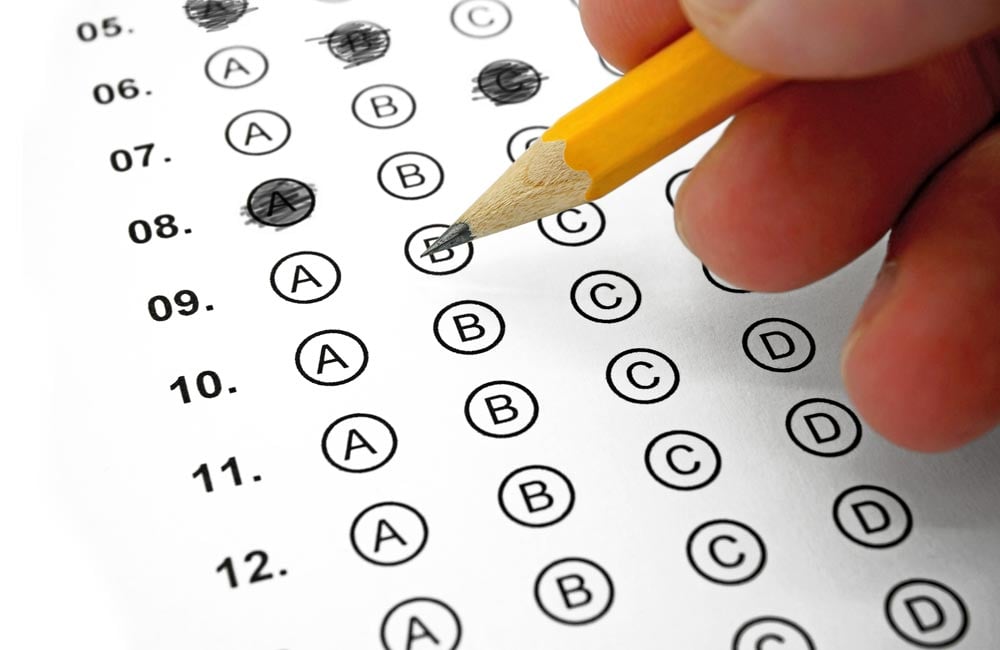 The College Board redesigned the SAT in March 2016. Below is the complete explanation from the College Board about the changes.
The College Board redesigned the SAT in March 2016. Below is the complete explanation from the College Board about the changes.
The Basics
- The redesigned SAT will first be given in spring 2016.
- The SAT will be offered in print and, at selected locations, on computer.
- There will be three sections: Evidence-Based Reading and Writing, Math, and the Essay.
- The length of the SAT will be about three hours, with an added 50 minutes for the essay. Precise timing will be finalized after further research.
- The exam will once again be scored on a 400- to 1600-point scale. The Evidence-Based Reading and Writing section and the Math section will each be scored on a 200- to 800-point scale. Scores for the Essay will be reported separately.
Eight Key Changes
The redesigned SAT will ask students to apply a deep understanding of the few things shown by current research to matter most for college readiness and success. They’ll find questions modeled on the work of the best classroom teachers and perform tasks practiced in rigorous course work. The SAT redesign is centered on eight key changes.
Relevant Words in Context
The redesigned SAT will focus on relevant words, the meanings of which depend on how they’re used. Students will be asked to interpret the meaning of words based on the context of the passage in which they appear. This is demanding but rewarding work. These are words that students will use throughout their lives — in high school, college, and beyond.
Requiring students to master relevant vocabulary will change the way they prepare for the exam. No longer will students use flashcards to memorize obscure words, only to forget them the minute they put their test pencils down. The redesigned SAT will engage students in close reading and honor the best work of the classroom.
Command of Evidence
When students take the Evidence-Based Reading and Writing section of the redesigned SAT, they’ll be asked to demonstrate their ability to interpret, synthesize, and use evidence found in a wide range of sources. These include informational graphics and multiparagraph passages excerpted from literature and literary nonfiction; texts in the humanities, science, history, and social studies; and career-related sources.
For every passage students read, there will be at least one question asking them to select a quote from the text that best supports the answer they have chosen in response to the preceding question. Some passages will be paired with informational graphics, and students will be asked to integrate the information conveyed through each in order to find the best answer.
Questions that assess writing skills will also depend on a command of evidence. Students will be asked to analyze sequences of paragraphs to make sure they are correct, grammatically and substantively. In some questions, students will be asked to interpret graphics and edit the accompanying passages so that they accurately convey the information in the graphics.
The redesigned SAT will more closely reflect the real work of college and career, where a flexible command of evidence — whether found in text or graphic — is more important than ever.
Math Focused on Three Key Areas
The exam will focus in depth on three essential areas of math: Problem Solving and Data Analysis, the Heart of Algebra, and Passport to Advanced Math. Problem Solving and Data Analysis is about being quantitatively literate. It includes using ratios, percentages, and proportional reasoning to solve problems in science, social science, and career contexts. The Heart of Algebra focuses on the mastery of linear equations and systems, which helps students develop key powers of abstraction. Passport to Advanced Math focuses on the student’s familiarity with more complex equations and the manipulation they require.
Current research shows that these areas most contribute to readiness for college and career training. They’re used disproportionately in a wide range of majors and careers. The SAT will sample from additional topics in math, but keep a strong focus on these three.
Problems Grounded in Real-World Contexts
Throughout the redesigned SAT, students will engage with questions grounded in the real world, questions directly related to the work performed in college and career.
In the Evidence-Based Reading and Writing section, reading questions will include literature and literary nonfiction, but also feature charts, graphs, and passages like the ones students are likely to encounter in science, social science, and other majors and careers. Students will be asked to do more than correct errors; they’ll edit and revise to improve texts from the humanities, history, social science, and career contexts.
The Math section will feature multistep applications to solve problems in science, social science, career scenarios, and other real-life contexts. Students will be presented with a scenario and then asked several questions about it. This allows students to dig into a situation and think about it, then model it mathematically.
Analysis in Science and in Social Studies
When students take the redesigned SAT, they will be asked to apply their reading, writing, language, and math skills to answer questions in science, history, and social studies contexts. They will use these skills — in college, in their jobs, and in their lives — to make sense of recent discoveries, political developments, global events, and health and environmental issues.
Students will encounter challenging texts and informational graphics that pertain to issues and topics like these in the Evidence-Based Reading and Writing section and the Math section. Questions will require them to read and comprehend texts, revise texts to be consistent with data presented in graphics, synthesize information presented through texts and graphics, and solve problems based in science and social science.
Founding Documents and Great Global Conversation
America’s founding documents — such as the Declaration of Independence, the Constitution, and the Bill of Rights — are all rather short, but they have inspired a conversation that endures today. Every time students take the redesigned SAT, they will encounter an excerpt from one of the Founding Documents or a text from the ongoing Great Global Conversation about freedom, justice, and human dignity. In this way, we hope that the redesigned SAT will inspire deep engagement with texts that matter and reflect not only what is important for college and career, but what is important for citizenship here and around the world.
No Penalty for Wrong Answers
The redesigned SAT will remove the penalty for wrong answers. Students will earn points for the questions they answer correctly. This move to rights-only scoring encourages students to give the best answer they have to every problem.
Written by: Editorial Team, My Learning Springboard, Inc. From learning to write to perfecting your writing, My Learning Springboard offers a full spectrum of writing support, including:
From learning to write to perfecting your writing, My Learning Springboard offers a full spectrum of writing support, including: At
At  Imagine yourself in this situation: You’ve spent the past year or more shopping around for
Imagine yourself in this situation: You’ve spent the past year or more shopping around for